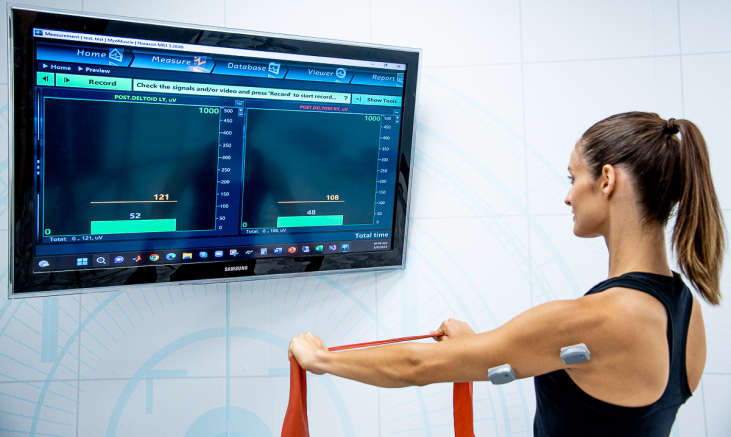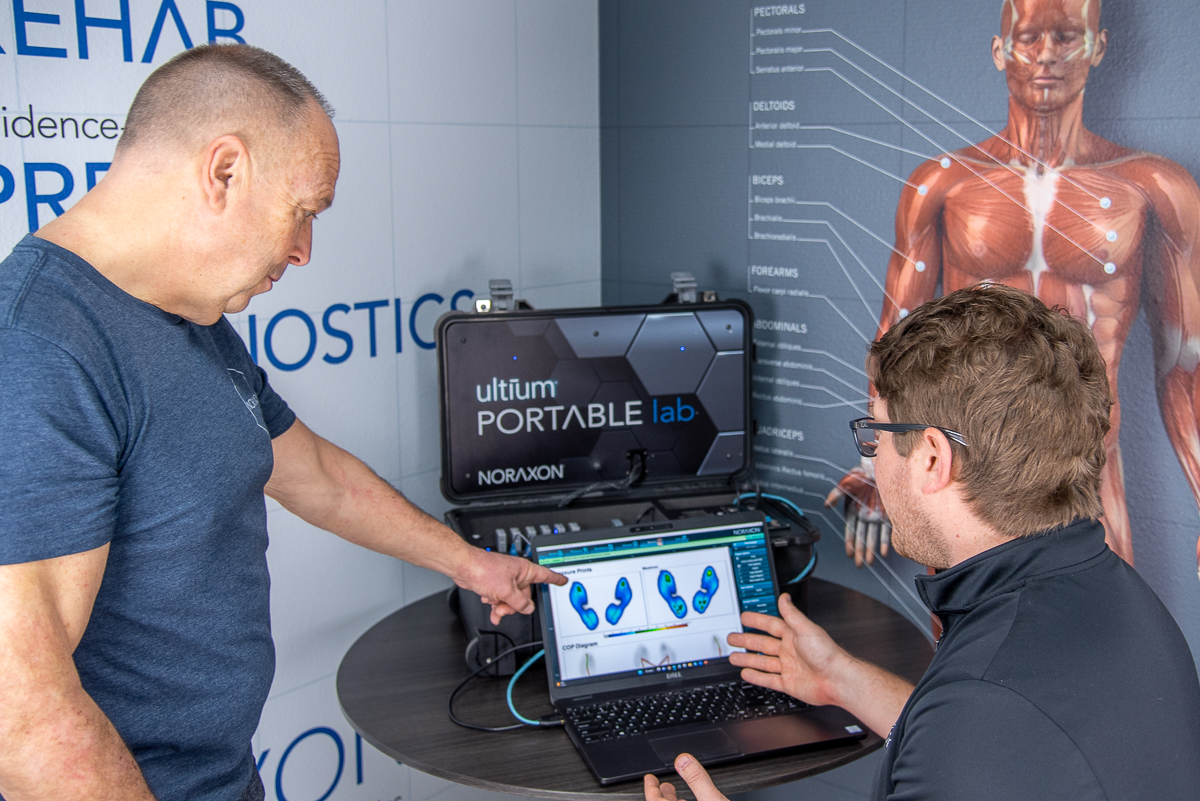Human biomechanics involves the investigation of human movement and function. This field centers around the analysis of how forces interact with the musculoskeletal system and the subsequent responses of bodily tissues to these forces. Biomechanical principles and tools are used by physical therapists and other healthcare professionals to enhance patient care, develop effective recovery strategies, and educate their patients about optimal body movements that can help minimize the risk of future injuries.

How do clinicians use biomechanics?
Clinicians employ various biomechanical devices to guide personalized rehabilitation programs for individuals with different injuries and conditions. Examples of these devices include:
- electromyography systems
- motion capture systems
- force plates
- pressure distribution platforms
- video analysis systems
With these tools, clinicians can administer different assessments that allow them to establish baseline measurements and help track the progress of patients through the rehabilitation process. These biomechanical assessments can help determine the most suitable exercises for patients and can greatly improve the patient’s knowledge on how their bodies are reacting to the treatment. They can also help give patients a visual representation of the work that needs to happen during rehabilitation or training.
How biomechanics are used in rehabilitation
Rehabilitation is not a one-size-fits-all phenomenon. What works for one person may not work for another, so it is important to tailor therapy to the individual. First, it is important that the clinician thoroughly assesses and evaluates the current state of the patient’s movement patterns and deficiencies. This process may involve analyzing their range of motion, muscle imbalances, and existing limitations. After that, a clinician will discuss their findings with the patient and set clear goals that are attainable while considering health concerns and the aforementioned limitations.

Based on the assessment that was conducted, exercises will be chosen and modified to fit the patient. From there, a progressive exercise regimen will take place which gradually increases in intensity and challenge while avoiding overloads on vulnerable areas. In addition to traditional movements, these exercises will include more cross-functional movements that mimic everyday tasks, as it is likely they are relevant to the patient’s lifestyle. By doing this, it can improve the overall functionality and capacity of the patient’s movements further reducing the risk of re-injury.
Continuously monitoring the patient’s progress and adjusting exercises to accommodate improvements or newfound challenges is important because there will be many changes throughout the process. Educating patients about the biomechanical principles that are being applied can significantly increase their understanding of why certain workouts are necessary and make them feel more involved and active in their rehabilitation.


